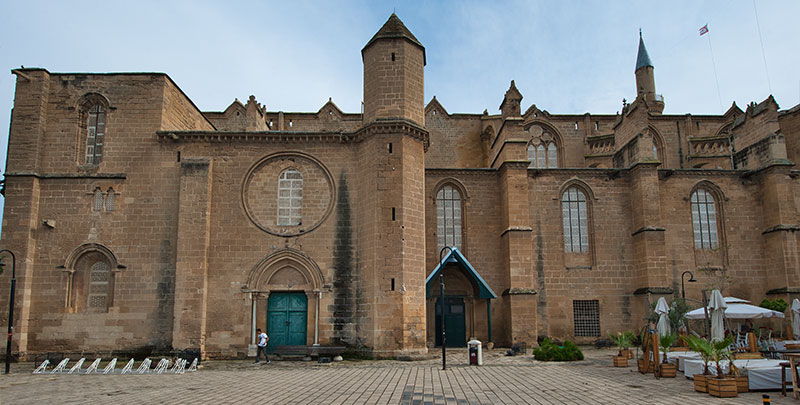
Welcome to a guitar-shaped island that claims to be the birthplace of Aphrodite, the Greek goddess of love! An island with an amber-coloured sweet dessert wine, commandaria, recognised as the world’s oldest named wine, dating back to the 13th century. Here, ancient tombs are carved from solid rock and decorated with among the world’s best Roman mosaics.
Why Travel to Cyprus?
- The low-down: The Republic of Cyprus is small enough to cover by rental car within a few days. It has mountains, beautiful turquoise waters, ancient ruins, friendly people, and great food. A perfect short holiday.
- The brightest highlight: The turquoise waters the Mediterranean Sea around Cape Greco is what most impressed me. Absolutely stunning. The second highlight for me was ancient ruins if you are a fan of historic sites.
- Intrepid destination: While the Republic of Cyprus is quite developed with good roads, some areas are really off the beaten track.
- Globerovers score (10 is highest): I really enjoyed travelling around Cyprus with a day trip into the town of North Nicosia which is inside the de facto state of Northern Cyprus. Take note that Northern Cyprus is considered by the international community to be part of the Republic of Cyprus. Only Turkey, who invaded this part of the island in 1974, recognises it as an independent state declared in 1983. The Republic of Cyprus (the southern part of the island) is fascinating and I’ll score it 8/10.
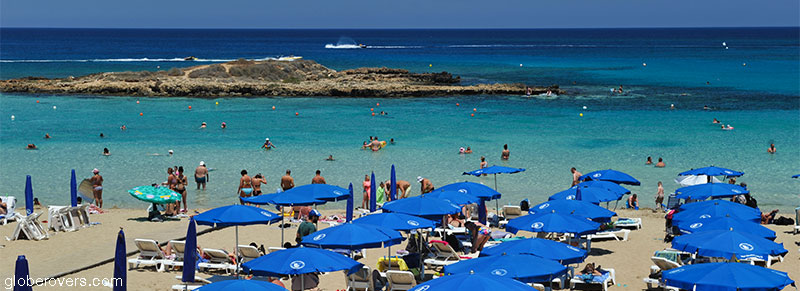
Table of Contents
Why the division?
Located a mere 70 kilometres (43 mi) south of Turkey and 100 kilometres (62 mi) west of Syria, Cyprus is a glowing gemstone in the turquoise waters of the eastern Mediterranean Sea.
Travellers are attracted to the island for many reasons. Some come here for the world-class scuba diving and wide sandy beaches. Others come for the mountains, turquoise seas, the food and people in quaint villages. Many are attracted to the ancient historic sites, remnants of bygone civilisations.
The Mediterranean island of Cyprus is a divided island where the Turkish Cypriots live north of the demilitarized zone, and the Greek Cypriots to the south
During the 70s and early 80s, Cyprus went through a tumultuous time when hundreds of thousands of Greek Cypriots fled the northern areas occupied by the Turkish troops while tens of thousands of Turkish Cypriots were transferred from the south. These forced displacements left people on both sides of the dividing line with a never-ending bitterness. The Cyprus divide, also known as the “Cyprus problem”, still remains unsolved.
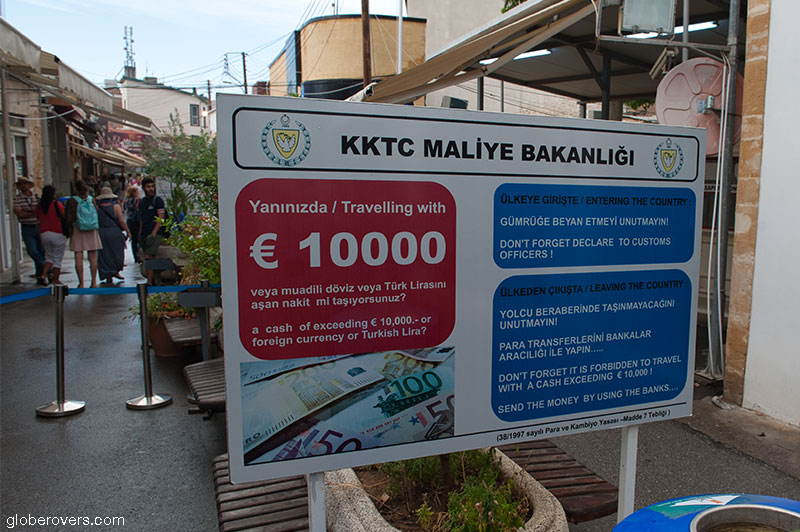
How the “Cyprus problem” was created: Britain took over Cyprus from the Ottoman Empire as a protectorate back in 1878, then annexed it in 1914. After the dissolution of the Ottoman Empire in 1925, the island was made a British Crown Colony.
Turkey, however, considered Cyprus an “extension of the Turkish Anatolia Peninsula”, so in line with a 1950s policy of the Turkish Cypriot leaders and the Turkish government, it was partitioned to create a Turkish state in the north of the island.
After Cyprus was granted independence from Britain on August 16, 1960, eleven years of inter-communal violence between the Greek Cypriots and the Turkish Cypriots followed.
The predominantly Greek population of the Republic of Cyprus live uncomfortably, and with regret, south of their Turkish neighbours
The Turkish military invaded the island on 20 July 1974, and by August they had annexed over 40% of the island. After a ceasefire, the Green Line demilitarized zone was established between the Turkish north and the Greek Cypriots in the south. In 1983 the Turkish Republic of Northern Cyprus (TRNC) declared independence, with Turkey the only country to recognise this illegitimate new government.
Travelling is easy except for taking a rental car across the dividing Green Line. Car rental companies do not allow cross-border driving so we will stay in the south and explore the Greek Cypriot part of the island, officially known as the Republic of Cyprus, or just Cyprus.
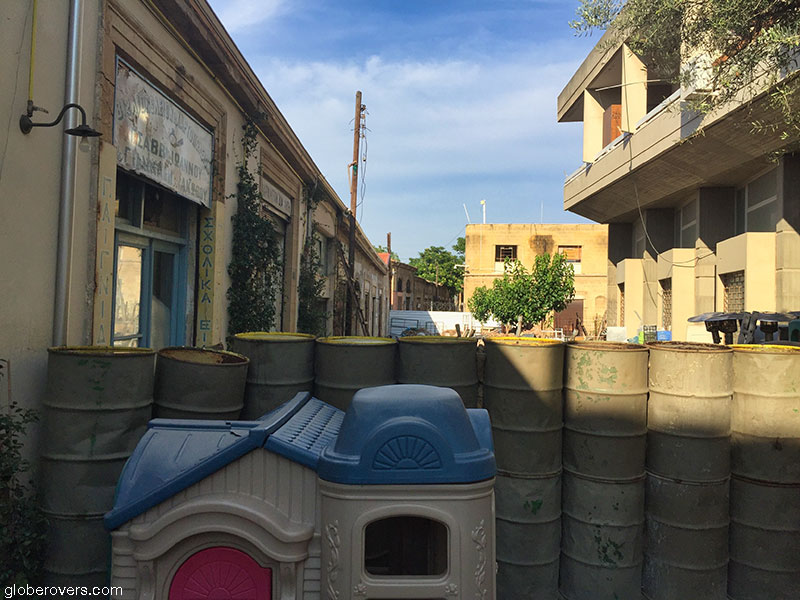
As the crow flies, the distance between Paphos in the west to Cape Greco in the east is 153 kilometres (95 mi) with a driving distance of about 186 kilometres (116 mi). We start in the divided city of Nicosia in the north, then travel southeast to Cape Greco. From here we go southwest to the city of Larnaca, then Limassol in the far south, west along the southern coast and all the way to the historic city of Paphos in the far west. We return to Nicosia by crossing the scenic hills and valleys around Mount Olympos.
The North
Nicosia, capital of the Republic of Cyprus, is the world’s last divided capital. Split into North Nicosia and South Nicosia, the Green Line of separation goes straight through the city.
For many years, most crossings between the North and the South were closed, but in 2003 a few were opened, and since 2008 the “Ledra Street crossing” has allowed pedestrian traffic. This is a popular place for travellers to cross from the modern and developed South to the rather depressing and backward North.
The United Nations Buffer Zone (Green Line) stretches 180 km along the north
Bring along your passport as you will need it to enter the North.
As you cross from the South into the North, the scars of past conflicts are brutally evident. The dividing line itself is a few metres wide and filled with abandoned homes, shops, and deserted land. Buildings still show the remnants of war — bullet-pockmarks, sandbags, and gun ports. Here you need to stand still for a few moments and ponder human stupidity.
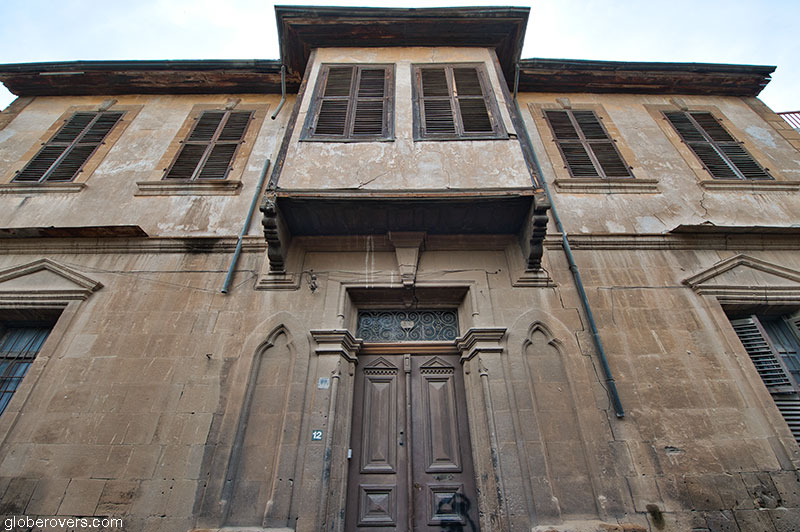

When talking to people on both sides, one gets the vibe that a spirit of reconciliation is flowing through the fences. There is a hope among the new generation of Cypriots that their Greek and Turkish heritage could soon be unified. It is time for the gaping wound between the two sides to mend.
The Greek side of the city has modern restaurants, shopping malls and fancy cars, similar to the rest of the South.
Must-see attractions are scarce, except for a few churches, mosques and museums, Venetian walls, and the Liberty Monument.
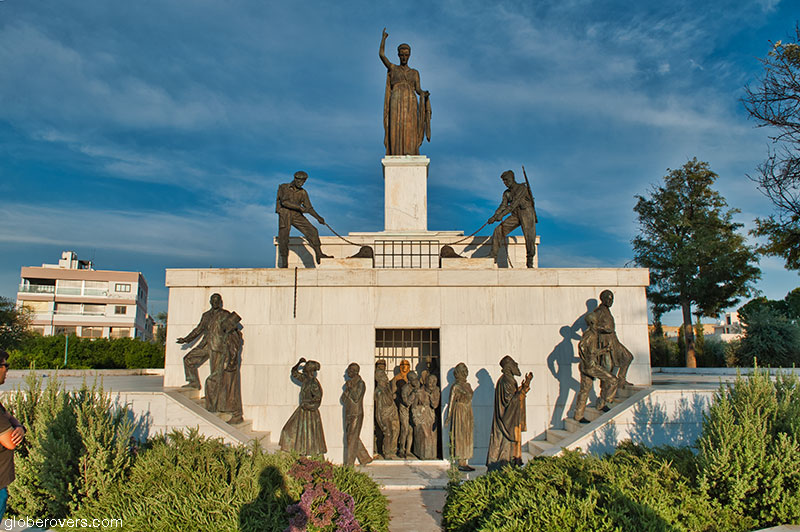
North Nicosia is more of a traveller’s adventure as time has been standing still here since the Turkish invasion in 1974.
Just north of the dividing line are the well preserved 16th-century Büyük Han Caravanserai and 14th century Selimiye Mosque, historically known as the Saint Sophia Roman Catholic Cathedral.
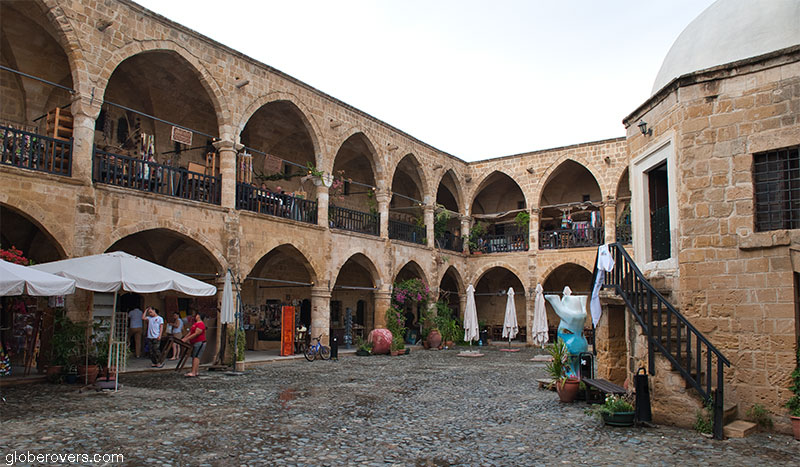
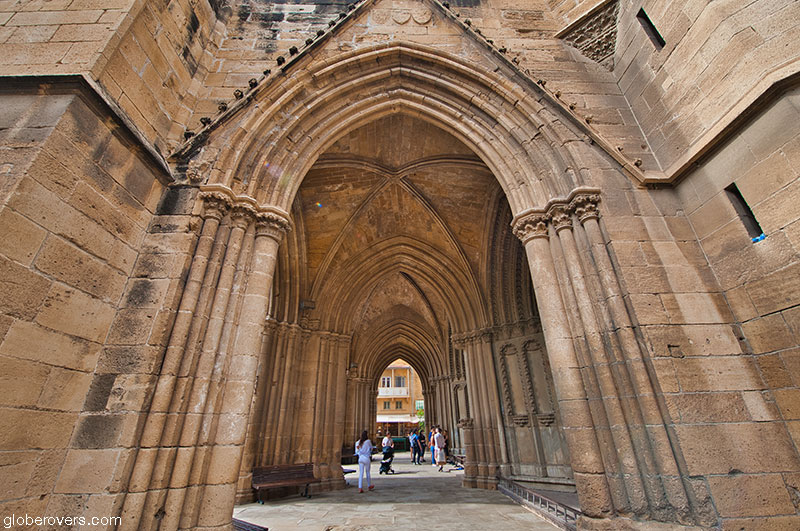
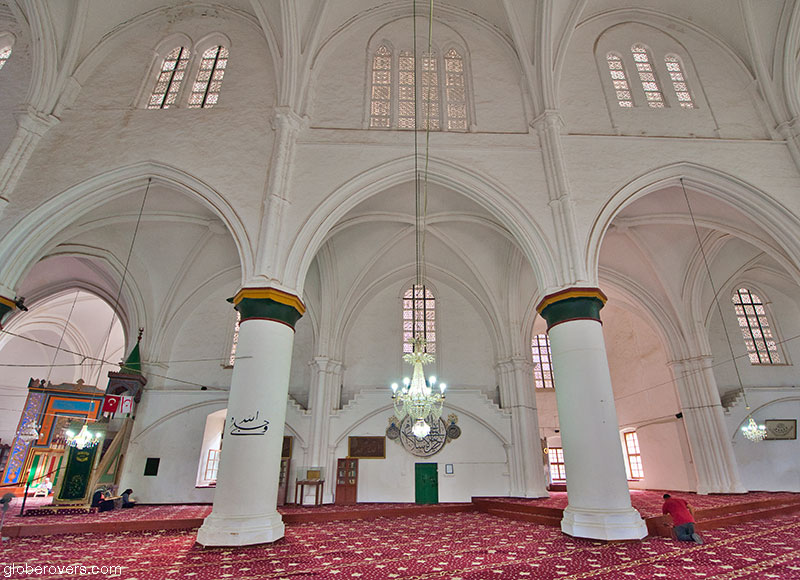
Wandering around North Nicosia’s old town is such a pleasure. Make sure to have lunch or dinner at one of the many authentic Turkish restaurants. You likely will see the Kahraman ice-cream man dressed in his traditional Turkish attire mixing and serving marvellous ice creams while entertaining the kids.
Euros in the South, Turkish Lira in the North.
Hotel sponsorship provided by Hilton Cyprus who treated me like royalty. I can highly recommend the beautiful Hilton which is conveniently located. Awesome staff, food, rooms, everything!
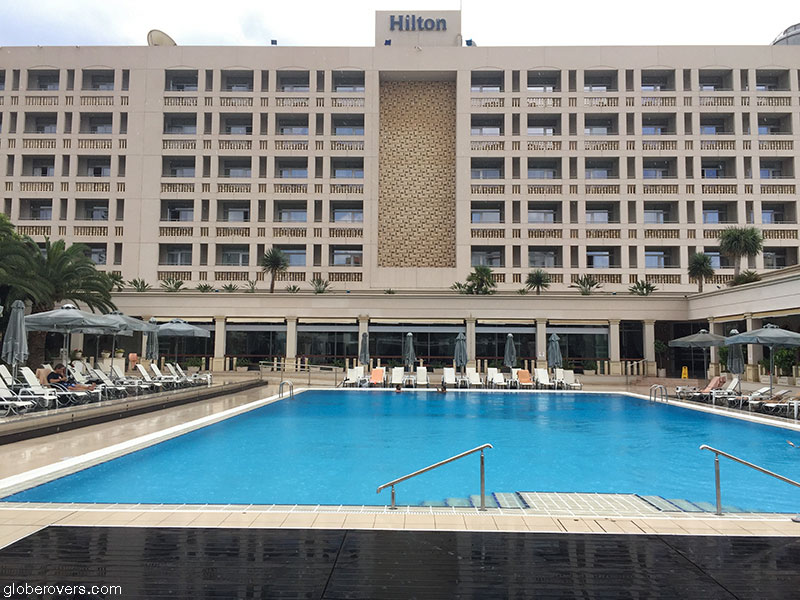
The East
The road from Nicosia to the far south-eastern tip, Cape Greco, is a pleasant drive along well-maintained highways.
About 35 kilometres (22 mi) before reaching the Cape Greco National Forest Park, the road passes through the British controlled area of Dhekelia, a United Kingdom Overseas Territory, though you may not even notice it. The Sovereign Base Areas of Dhekelia and Akrotiri (near Limassol), have British military bases and eavesdropping installations on lands that were retained under the 1960 treaty of independence.
The Republic’s east coast is home to the most beautiful turquoise sea waters!
Once you pass Dhekelia, the coastline is idyllic, especially as you get closer to the Capo Greco headland at the southern end of Famagusta Bay. The water here is a brilliant turquoise colour.
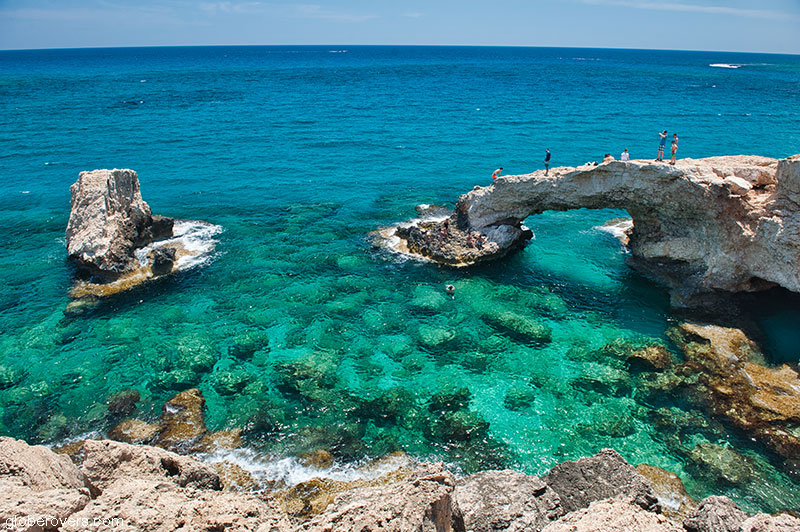
As you swim in these waters of paradise, keep an eye out for the legendary Ayia Napa cryptids sea monster known by the local fishermen as “the friendly monster”. While not regarded as dangerous, from time to time the monster is reported to drag away fishing nets.
Head back east to the pleasant city of Larnaca with its popular beaches, historic churches and museums, as well as a fortress and the 18th century Kamares aqueduct.

A short drive south of the city on the airport road is Larnaca’s own salt lake, complete with pink flamingos from November to January.
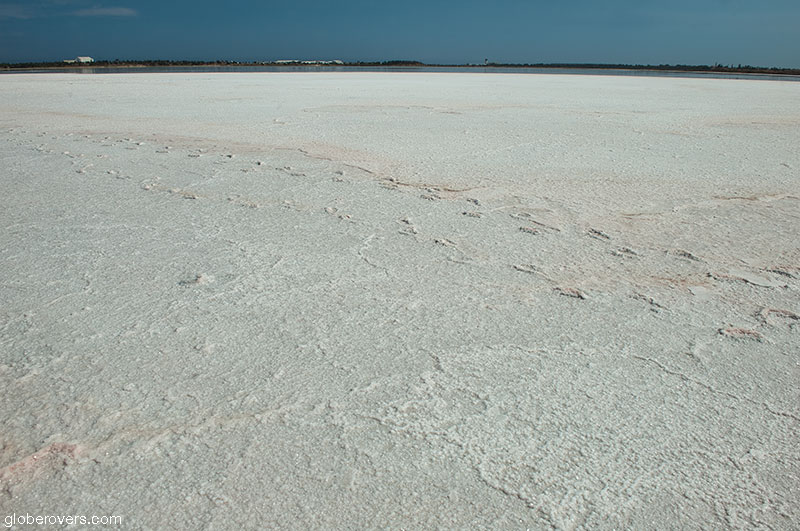
About 40 kilometres (25 mi) south of Larnaca on highway A5, the Nicosia highway A1 turns north. A 20 kilometres (12 mi) drive gets you to the Stavrovouni Monastery in Pyrga, founded in AD 327 and sitting in splendid isolation commanding superb panoramic views across the surrounding countryside. Note that only men are allowed inside the monastery buildings.
From the monastery it is about 75 kilometres (48 mi) to the Limassol Salt Lake, also known as Akrotiri Lake, lying at 2.7 metres (8.9 ft) below sea level. The lake is worth a visit, especially in winter when thousands of flamingos hang around while gobbling up brine shrimp, crustaceans, and blue-green algae.
Akrotiri Lake is the largest inland body of water on the island and lies inside the United Kingdom Overseas Territory of Akrotiri.
No passports or roadblocks in Akrotiri Territory—only large roadside signs forbidding passing travellers to take photos of the massive radar installations.
My accommodation in Larnaca was sponsored by the Livadhiotis City Hotel, which I can highly recommend. The hotel is centrally located and a short walk from the beach. Great rooms, great service, great food!
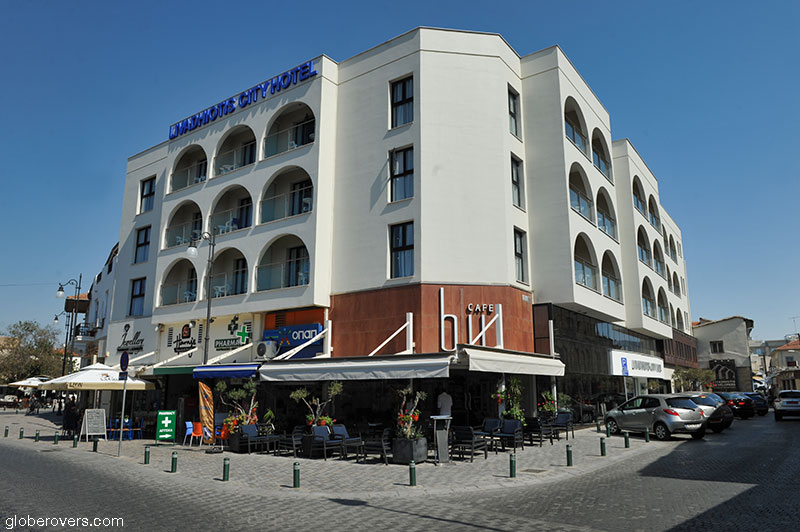
The Southern Route
Limassol, the second largest city after Nicosia, is very pleasant. Make sure to visit the 13th century Kolossi Castle and wander around the old town of Limassol, then head 15 kilometres (9 mi) west to the ruins of the 2nd century city-kingdom of Kourion.
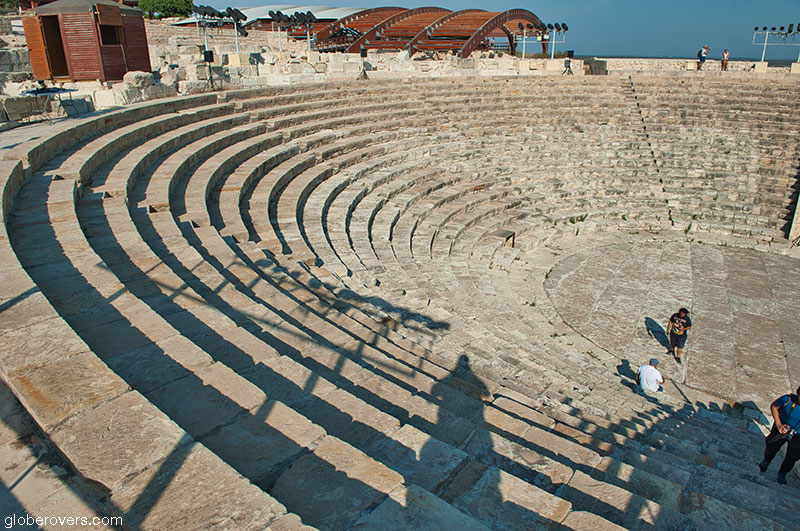
This once flourishing kingdom was destroyed in a magnitude 8.0 or higher earthquake at sunrise on July 21, 365 AD. The earthquake’s epicentre was near the island of Crete and caused widespread damage in Greece, northern Libya, Egypt, Sicily, Spain and here in Cyprus.
The rugged southern coast of Cyprus is known for its beaches and ancient ruins
Today we are left with ruins of the Greco-Roman theatre—the site’s centrepiece, open during the summer months for outdoor musical and theatrical performances. Protected from the elements by a large domed roof are the well-preserved geometric mosaics and inscriptions of the ‘House of Eustolios’, originally a private villa dedicated to Christ.
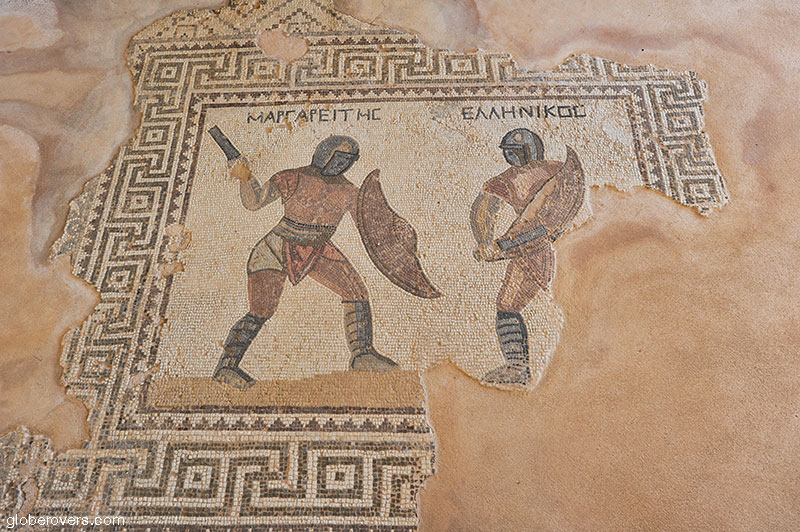
The 4th century AD ‘House of Achilles’ and the late-3rd century AD ‘House of the Gladiators’ both have impressive mosaic floors. The original parts of the Roman Agora date back to the early 3rd century.
A few hundred metres east of the Κourion Ancient Amphitheater stands a chapel dedicated to Agios Ermogenis, who was born in the 4th century. The original chapel was destroyed by invaders, and the current structure, within which a relic of Agios Ermogenis is found, was built in the 17th century.
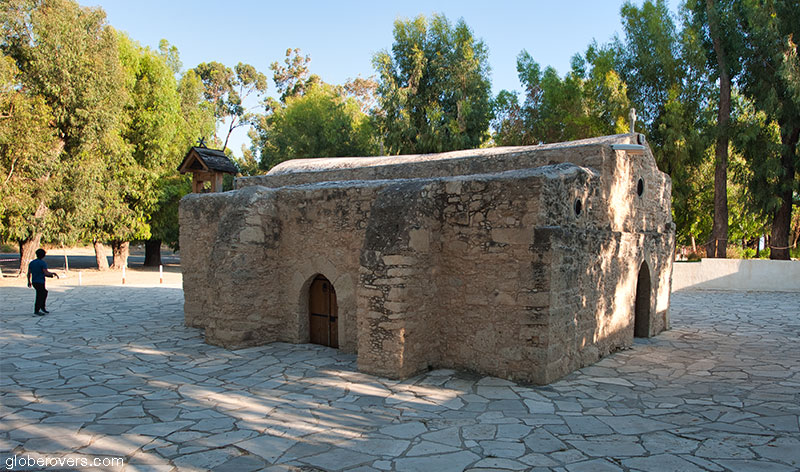
About 4 kilometres (2.5 mi) west of Kourion at Episkopi is the 8th century BC Temple of Apollo Hylates, which is well worth a short visit. This ancient monument was dedicated to the god of Apollo, thought to be the protector of nearby Kourion city. In ancient times this was one of the most prominent religious centres on the island where Apollo was worshipped as Hylates, god of the woodlands. The temple was destroyed in the same earthquake that destroyed Kourion.
Almost 70 kilometres (43 mi) further west is the famous Aphrodite’s Rock, locally known as Petra tou Romiou. Located along the beautiful rocky southern coastline, this is the legendary spot where the ancient Greek goddess Aphrodite—associated with love, beauty, pleasure, passion and procreation—is said to have emerged from the waves.
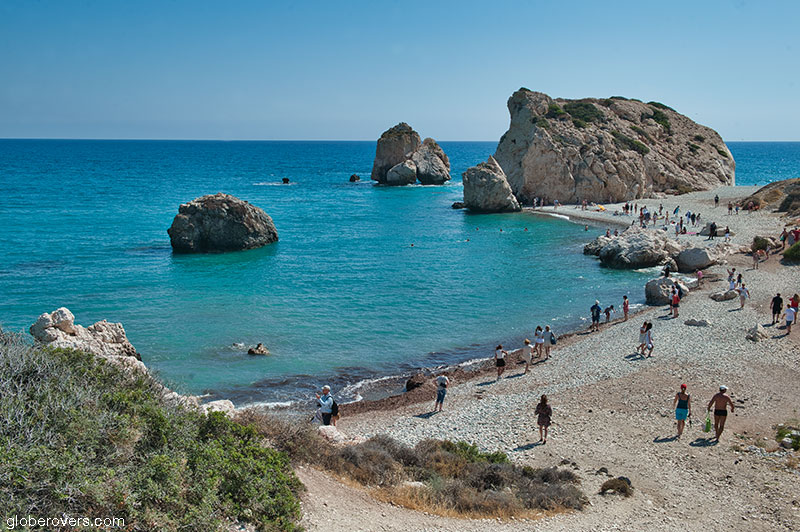
You will see two large rocks jutting out from the sea, creating one of Cyprus’ most photographed spots. At sunset, it is one of the island’s most magical places.
The coastline around this part of Cyprus is truly magnificent as the road winds high above the cliffs with panoramic views over the rocky shoreline.
The West
The route to Paphos continues west along another beautiful stretch of coast. Just a few kilometres southeast of Paphos is the village of Geroskipou, known for its 9th century Byzantine church, one of only two such churches on the entire island.
The west is dominated by beaches and Paphos, inhabited since Neolithic times.
Dedicated to Agia Paraskevi, it is a five-domed, three-aisled, barrel-vaulted basilica. The interior wall paintings date from the 8th to 15th centuries.
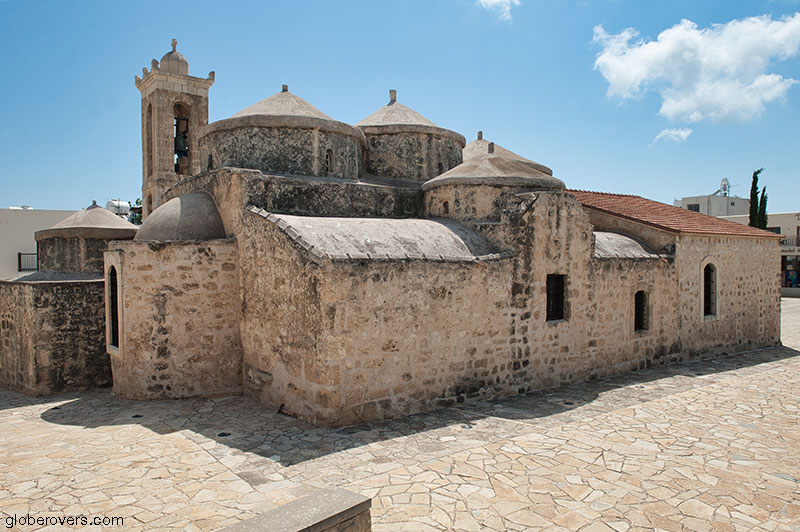
In Paphos, my stay was sponsored by the highly recommended family-owned and managed Axiothea Hotel where you will receive true Cypriot hospitality.
The sweeping views from the hotel over the town and the ocean are beautiful.
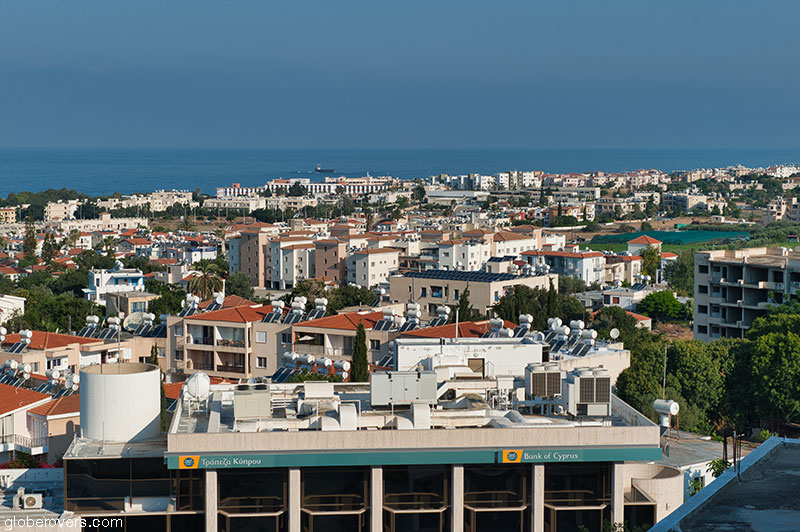
The dominant feature of the town of Paphos is the old part of town and Medieval Castle by the harbour. This is also where you will find the Paphos Archaeological Park, locally referred to as the “Kato Pafos”.
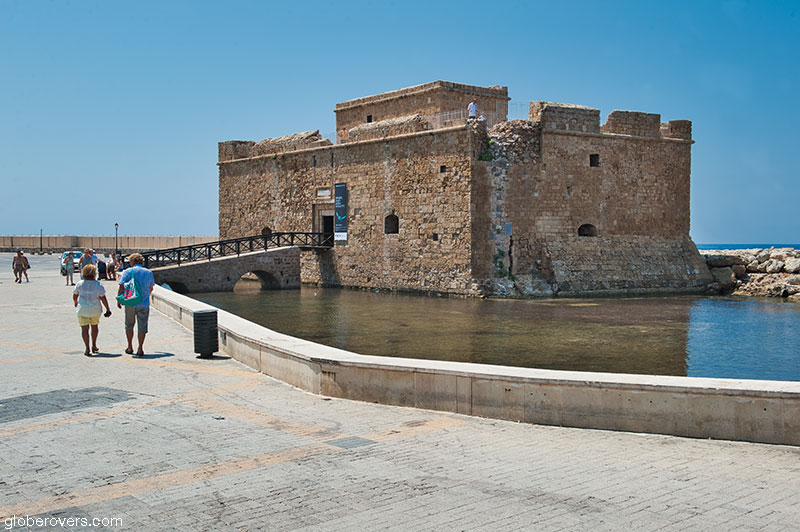
This large area, which remains under constant excavation, contains an ancient Greek and Roman city dating from prehistoric times throughout the Middle Ages. Here you will find four large and elaborate Roman villas: the Houses of Dionysos, Aion, Theseus and Orpheus. They all have intricate mosaic pavements, in particular at the House of Dionysus.
Past excavations have also uncovered an Agora, Odeon, and large Hellenistic-Roman theatre. A little closer to town is the ancient and very well preserved 4th century Agia Kyriaki known as the Hrysopolitissa or Chrysopolitissa Basilica. Several magnificent marble columns decorated with mosaics remain, including the so-called “St Paul’s Pillar” on the western side of the church. According to ancient scriptures, this is the spot where Saint Paul was tied to the pillar and scourged 39 times before he finally converted his tormentor, the Roman governor Sergius Paulus, to Christianity.

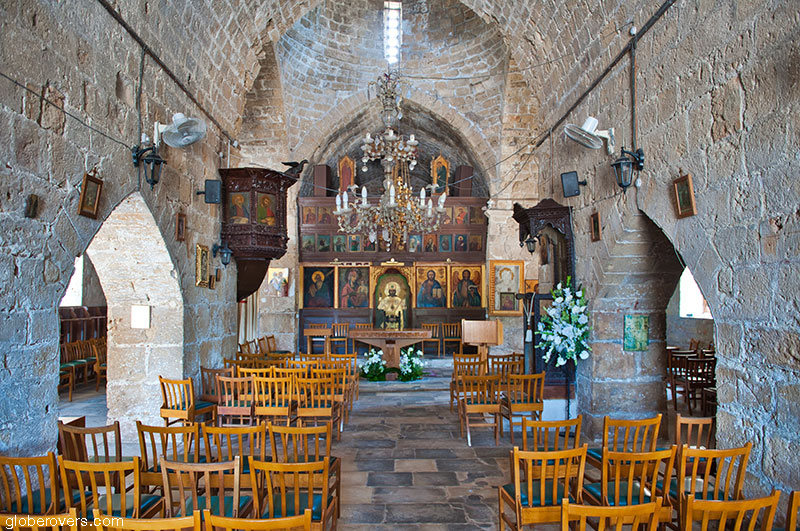
Here you will also find the tomb of Eric the Good, the 12th century king of Denmark who fell ill and died at the age of 42 or 43 on July 10, 1103, on his way to Constantinople, now Istanbul.
A few kilometres north of Paphos are the Tombs of the Kings, dating from the 4th century BC to 3rd century AD. This UNESCO World Heritage Site contains solid rock-cut tombs of several high ranking officials or members of society, but no kings.
The reference to King’s Tombs is more likely referring to the magnificence of the tombs than to kings being buried here. The elaborately decorated walls and columns carved out of the solid rock are truly awe-inspiring.
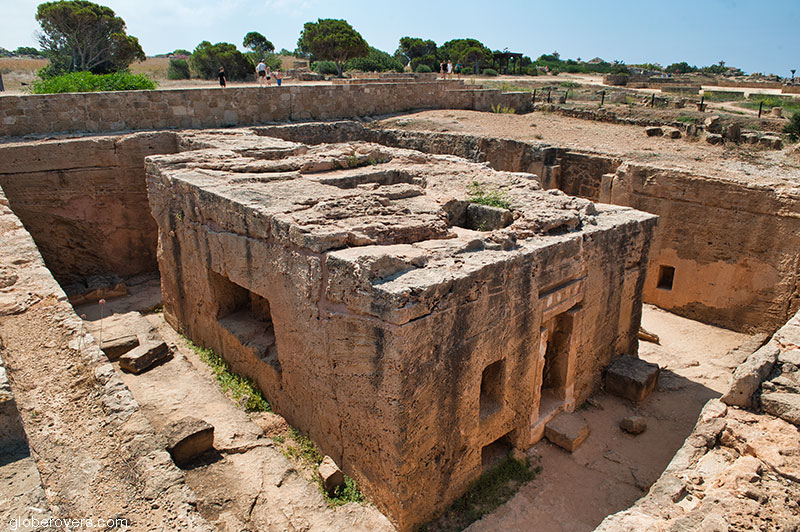
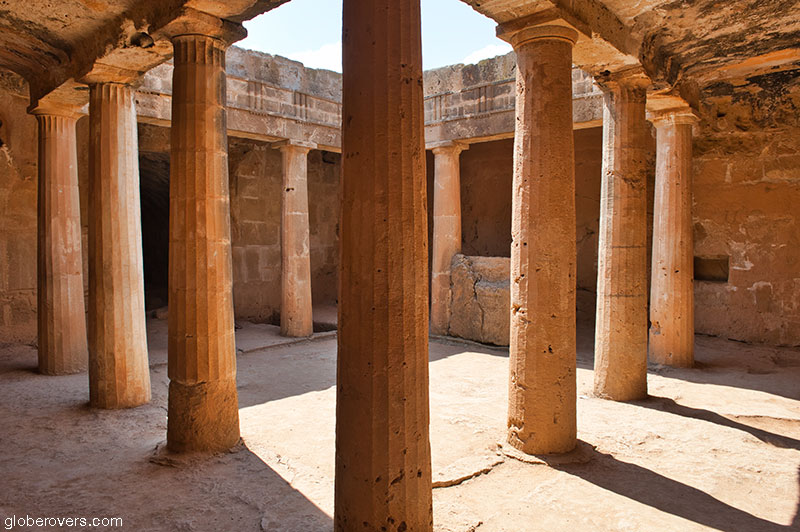
Further north of Paphos are several beautiful beaches, one of which is Lara Beach, leading to the Akamas Peninsula in the far northwest.
On the north side of the peninsula near the monumental baths of Aphrodite is Yiannakis Beach, regarded as one of the island’s top beaches. The beaches of Cyprus are more celebrated for the crystal clean turquoise-emerald waters than their white sand.
It is time to return to Nicosia where we started our journey. The shortest route is 89 kilometres (55 mi) and passes through North Cyprus, a route not allowed by most car rental companies.
The best option is therefore to backtrack and take the 121 kilometres (75 mi) southern route through the Paphos Forest. The roads here are challenging and adventurous.
Once you exit the forest just to the north of Mount Olympos, take a short detour via the villages of Pedoulas and Kakopetria.
Both are beautiful red-roofed communities built along the valleys, each with its own prominent and impressive church building. Pedoulas has the Church of the Holy Cross (Timios Stavros) completed in 1935, while Kakopetria has the St. Panteleimon Church (Agios Panteleimonas) that was reconstructed between 1989 and 1994.
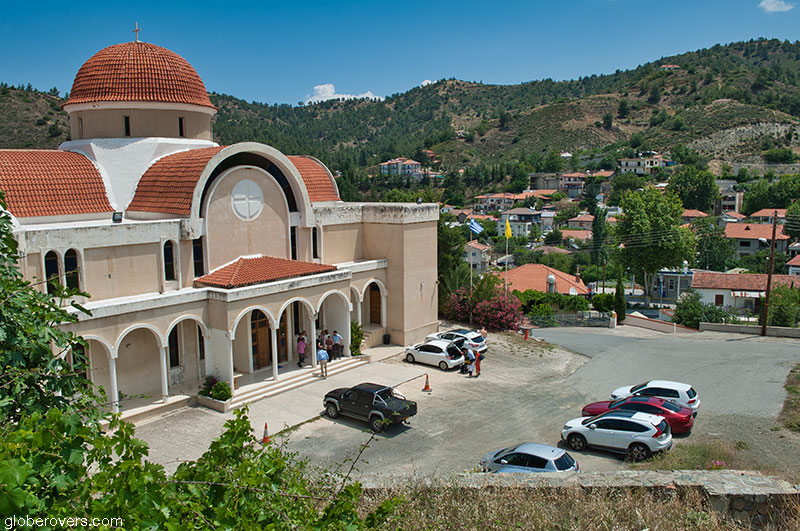

From Kakopetria it is about 30 kilometres (19 mi) to Nicosia. You will be happy to check into the Hilton Cyprus and order a Commandaria, known as the “Wine of Kings and King of Wines”.
Alternatively, order one of the local favourites such as a Brandy Sour cocktail or the local ‘firewater’ called Zivania, a distillation of leftover grape skins and residue from winemaking.
It is time to promise yourself to soon return to Cyprus!
Essential Information
Getting There
Frequent scheduled flights operate year-round from European and Middle Eastern cities. Cyprus has two international airports: Larnaca and Paphos. Mediterranean cruise ships stop at Limassol Port. This port also handles connections to the Greek islands of Rhodes, Crete and to the port of Pireaus (Athens) and between Cyprus and Israel, Lebanon and Egypt.
Getting Around
Cyprus has no train network and no domestic air service, so your main options are to drive, catch buses or take taxis. Bus services between the large cities such as Larnaca, Limassol, Paphos and Nicosia are reliable and not expensive. However, without your own wheels you will be missing the best of Cyprus, so it is best to rent a car or motorbike.
Photography
While most photographers will find enough beautiful scenery to keep them busy for a while, the country is not a photographer’s paradise. Obviously it depends on what scenery makes you tick! Paphos and Kourion have many photogenic ancient ruins while North Nicosia is interesting as time seems to have stood still for many years.
When to Go
Summers (May all the way through to October) are dry and sunny but quite hot while winters (November to February) are mild but wet. Spring and fall are ideal to travel around the entire country. Spring is blessed with flowers, such as orchids, while autumn is colourful in a different way.
Where to Stay
Cyprus has a well-developed tourist infrastructure with accommodation available across the republic. This may not be true for Northern Cyprus. In the small towns and mountainous areas, many old traditional homes have been converted into guesthouses and are very pleasant.
Safety
Cyprus is generally safe. The most important safety rule to follow is to not attempt to enter the United Nations buffer zone at any place other than a designated crossing point. Police and UN forces strictly enforce this restriction. It is forbidden to take photos while driving through the British territories.
Dining Out
Cyprus has great food and restaurants. Traditional Cypriot foods include souvlakia (grilled meat kebabs), shaftalia (grilled sausage), afella (marinated pork), fried halloumi cheese, olives, pitta bread, kolokasi (taro), lamb, chickpeas, artichokes, and rabbit stews. All very delicious.
Packing
Summers are hot but generally not unbearable. Winters are mild but wet. Packing all depends on the activities you are planning. Hiking and swimming are popular. The coastline is volcanic so bring along the rubber shoes for swimming. Cypriots are casual so dress down.
Cost of Travel
Bring cash in Euro though credit cards are accepted in most hotels, restaurants and larger shops throughout Cyprus. ATMs are widely available. As with most countries, it all depends on how much you want to spend. Prices vary widely for accommodation and food.
☛ Read more: Circling the Republic of Cyprus

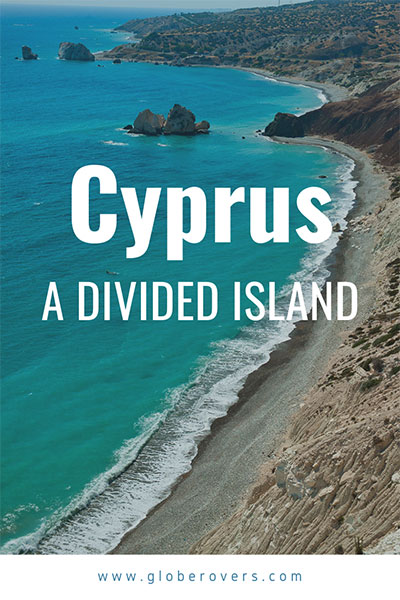
Further reading

Blog post and photos by Peter who has been travelling almost full-time since 2005 and has been to over 122 countries. He visited several countries, such as Japan, more than 20 times. Peter is Editor-in-Chief and Publisher of GlobeRovers Magazine, an independent travel magazine focused on intrepid destinations.
